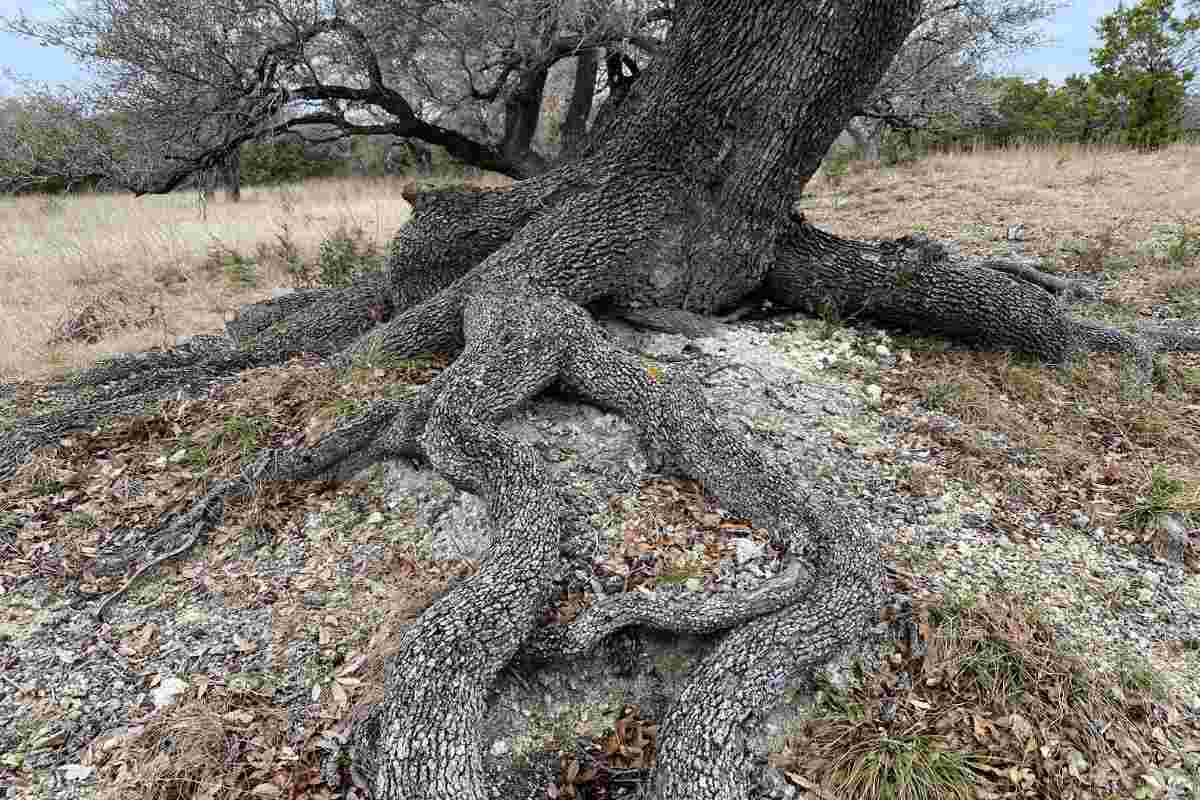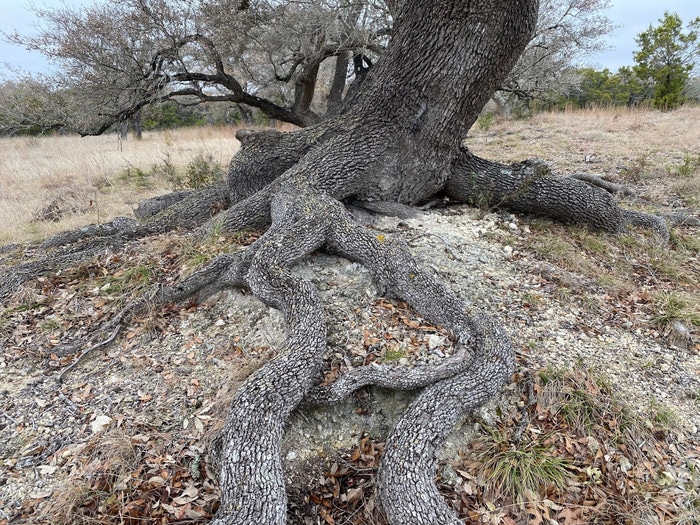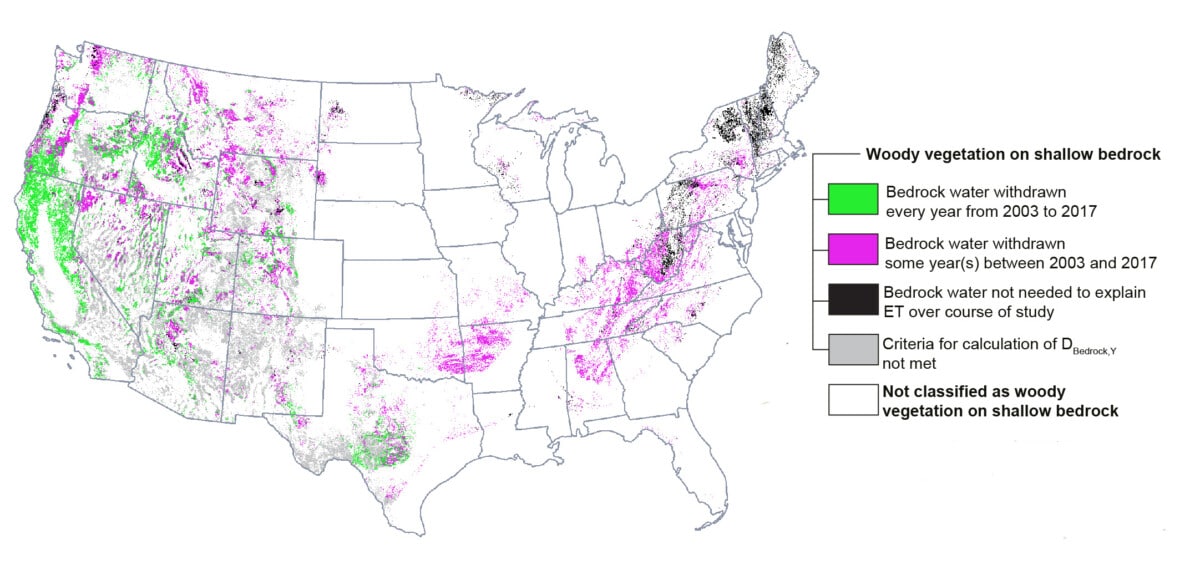
And they don’t just do that as an emergency solution during drought.
Thought you couldn’t squeeze water out of rocks? Tree roots can. In fact; they do so more often than scientists thought possible. In a new study, researchers show that American trees extract water from rock remarkably often. A discovery that leads to whole new ideas about how forest ecosystems function.
Water from stone
For more than a century, scientists from all over the world have stumbled upon tree roots that have become lodged in rock. However, this puzzling phenomenon was dismissed quite easily; although it may appear that the tree draws water from the rock, in most cases the soil would serve as the actual source of water.

An oak roots in rock. Image: Erica McCormick
Yet the subject did not let go of scientists. And later experiments showed that trees are still able to tap water from rock, at least during droughts. However, pressing questions remained about how widespread this phenomenon is.
Study
In a new study, researchers decided to re-examine the curious issue. They combined public data sets on precipitation and evaporation with field studies in the US states of Texas and California. And they made a surprising discovery. Trees that extract water from rock are far from rare: it occurs all over the country. In fact, researchers encountered the phenomenon in 24 percent of all forests and shrublands — an area larger than the entire state of Texas.

Trees that extract water from rock are widespread. Image: McCormick et al.
It means that American trees frequently extract water from rock; they don’t just do this as a stopgap during drought. In fact, in some areas, trees even prefer rocks to the bottom. For example, at six locations in California and two in Central Texas, more than 50 percent of the water that trees absorb came from rocks. In most of these places, the rock also contains considerably more water than the ground: sometimes even ten times as much. The discovery thus rejects long-standing assumptions about where trees get water from. Moreover, it leads to whole new ideas about how forest ecosystems function.
How much? A lot!
Incidentally, the research not only shows that trees often use their roots to extract water from rock, it also shows how much water trees extract from rocks. For example, the researchers hypothesize that in California alone, trees annually absorb more water from rock than the combined capacity of all the man-made reservoirs in the state. But that’s even a modest estimate, the researchers say. Presumably, the actual size and amount of water extracted from bedrock by trees is even double what is described in the study.
Jump into knowledge
According to researcher Susan Schwinning, not involved in the study, the study is a huge leap in knowledge. “It proves that what was once considered atypical behavior is essential,” she says. “It has taken 100 years to come up with this evidence and to understand that this is likely in many places and an important part of ecosystems.”
Climate change
In addition, the study shows that we need to slightly revise our predictions about how forests will respond to climate change. Because now that we know that trees also frequently extract water from rock, this should also be taken into account in the models. “As we experience increasing drought, bedrock may be just as important to our understanding of forests as soil,” said study researcher Daniella Rempe.
While it is clear that ‘rock moisture’ plays a vital role in forest conservation, our understanding of this is still in its infancy. An important question, for example, is how exactly trees gain access to the water that is locked up in rocks. “There is still a lot to discover,” said study leader Erica McCormick.
Source material:
“Water in bedrock is sustaining trees across country– University of Texas at Austin (via EurekAlert)
Image at the top of this article: